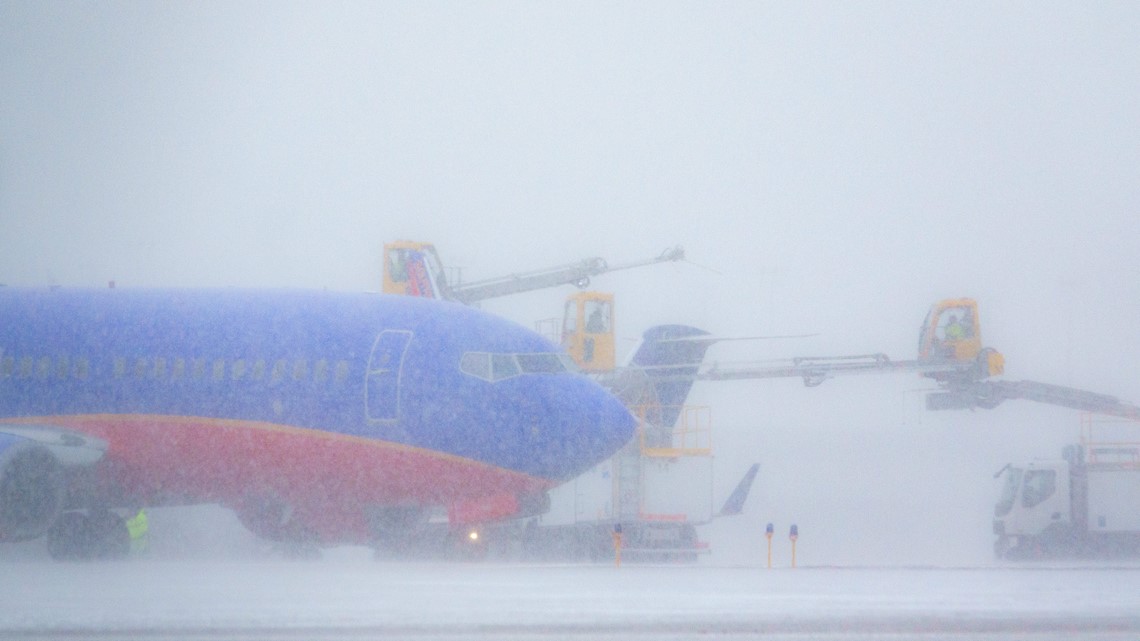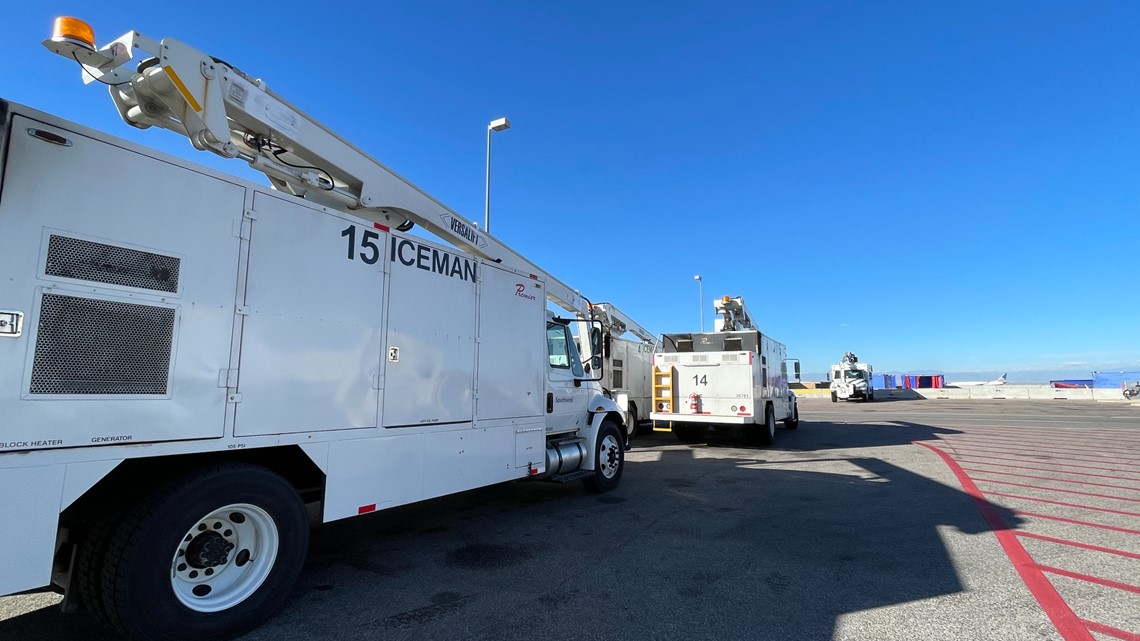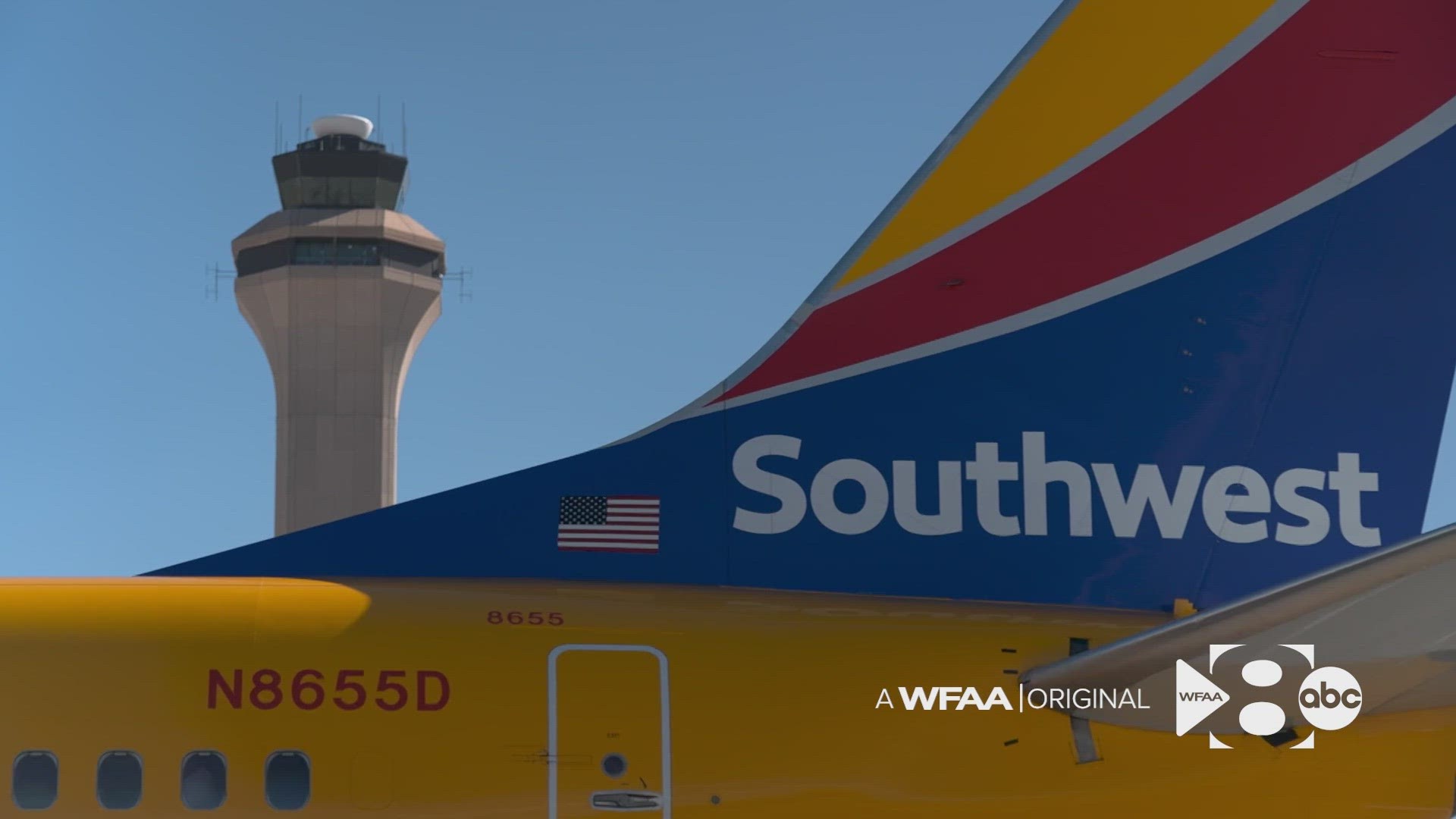DENVER — The memories of what happened are fresh - so fresh, they’re probably still painful.
But maybe the scope of it all slipped your mind.
A winter storm paralyzed Dallas-based Southwest Airlines in December 2022.
Almost 17,000 flights were canceled.
Almost two million passengers were impacted.
Almost 100,000 pieces of luggage were lost in limbo at airports all across the country right at Christmas.
Those numbers are straight from Southwest’s website.
“They can’t give me back the time I missed with my child,” Virginia Cable told WFAA in December, after multiple Southwest cancellations. She’s in the Navy and had a baby she was trying to get home to see.
“You can’t really explain to a 19-month-old why you’re not there,” Cable said.


So, what happened?
And, more importantly -- as winter weather and holiday travel draw nearer – what has Southwest done to keep it from happening again?
Southwest Airlines Chief Operating Officer Andrew Watterson said an internal review and external review by aviation consultancy Oliver Wyman revealed it was a literal perfect storm of operational and technological failures.
“It wasn’t just one thing. That was the big surprise. It was many things together,” Watterson told WFAA.
The weather in Denver – where Southwest operates the most flights in its network -- was key to the system collapsing.
According to the National Weather Service, Denver International Airport experienced a one-hour drop in temperature of 37 degrees – from 42 degrees to 5 degrees – on December 21, 2002.
It is believed to be the biggest one-hour drop ever recorded at DIA.
One day later, the high temperature reached just 6 degrees below zero.
The low was 24 below zero, making December 22 the second coldest day in Denver’s history.
“The amount of snow, the wind, the temperature – we were not able to effectively de-ice aircraft in particular,” Watterson said.


Other airlines had to cancel flights because of the deep cold, but they all recovered much more quickly than Southwest.
The FAA has guidelines for how long de-icing can take, start to finish and Watterson said Southwest repeatedly kept timing out – it just couldn’t finish the de-icing process fast enough.
That meant planes couldn’t take off, so flights got canceled.
Then flight crews and aircraft were out of position for their next assignments.
When the software that tracks pilots and flight attendants got overwhelmed, it crashed.
Then Southwest didn’t know where thousands of crew members were.
And suddenly a winter storm that hit Denver grew into a cross-country avalanche.
“It wasn’t the case that technology caused an operational problem. It was an operational problem that caused technology issues,” Watterson told WFAA. “Yes, the technology could have been better in that situation, but we put it in a bad spot through our operational problems.”
Southwest said it has upgraded and updated the crew-tracking software.
But after the internal and external reviews, it became clear that the airline just wasn’t prepared enough for winter weather – particularly in Denver.
Southwest didn’t have enough equipment or people to de-ice.
So, Denver is where the greatest investments have been made in the last year.


De-icing can only be done in specific locations with proper drainage, so Southwest increased the number of de-icing pads at DIA from six to 10.
The airline added 15 de-icing trucks to its fleet for a total of 40.
Five of the trucks have closed cabs, which protects the ground crew members operating the machines.
“It’s climate controlled, it’s heated. In reality - in the worst of winters you could be in there in a t-shirt,” joked Mike Wright, Southwest Manager of Operations at DIA.
Southwest also made the refilling and refueling process faster for its de-icing trucks.
It upgraded its glycol refill stations and purchased a diesel nurse truck which will keep trucks from having to go to DIA’s filling station on the other side of the terminal.
The airline also purchased three high-powered heaters to keep ground equipment from freezing.
But perhaps most significant – it hired 450 new employees in Denver alone and trained all of them on de-cing.
“We do control a big part of the network,” Wright said. “If there’s something that ripples up here in Denver, it can adversely affect everything else across the network.”
He’s confident that the upgrades and investment will pay off.
“I really feel like we are in a much better position this year to be able to tackle this season head on,” Wright said.


Southwest said it also added more de-icing trucks to the fleets in Nashville and at Chicago Midway.
Midway also got three additional de-icing pads.
Sixteen of the high-powered heaters have been added to 10 airports across the network – including two at Dallas Love Field.
And, across the country, more than 2,700 employees have been trained to de-ice.
“It was a weather situation we had not seen before in Denver, but the lesson to us is you must prepare for situations you have not seen before,” Watterson said. “Weather’s getting more extreme. So, you have to plan for it to be different than you’ve ever seen before.”
He said he feels confident in the planning and preparation that’s gone into the 2023 winter season.
“We certainly have added a margin of error all throughout our system so that we can tolerate shocks to the system that we did not anticipate. We saw it this summer in California. There was a hurricane in California. I don’t think there’s been one since aviation was invented. Yet we were able to weather that without a big disruption.”

